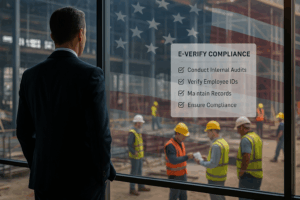Posted in Blog
By Tony Liu, Founder and Principal Business Trial Attorney
In Summary:
The “Big Beautiful Bill” proposes to make E-Verify, a federal employment verification system, mandatory nationwide. While designed to strengthen border security, it threatens to upend hiring practices and increase legal exposure for business owners. This article explores what business leaders need to know, including how the law could affect workforce strategy, compliance risks, and proactive steps to protect operations. If you’re relying on fast, flexible hiring or trusting your vendors and partners to do things right, you can’t afford to ignore this. Our Irvine, CA breach of contract lawyer is here to help you.
Is Your Workforce Strategy at Risk?
The workforce of tomorrow may not be built on speed, flexibility, or even trust—it may be built on paperwork.
With the proposed “Big Beautiful Bill” inching closer to the legislative floor, business leaders with lean operations and rapid hiring needs are asking: What will mandatory E-Verify mean for my business?
The answer? Higher compliance risks, delayed hiring, vendor vulnerability, and reputational exposure.
The companies that thrive under this new regulation will be those that treat it not as an obstacle—but as a trigger to tighten their operations before enforcement begins.
What Is the “Big Beautiful Bill” and Why Is Everyone Talking About It?
Big Beautiful Bill Cheat-Sheet for CEOs
The Origins of the Bill
The “Big Beautiful Bill” is a proposed piece of federal legislation aimed at overhauling the United States’ border security, employment verification, and immigration enforcement protocols. Spearheaded by lawmakers advocating for strict immigration control, it includes a provision that would make the federal E-Verify system mandatory for all employers—no exceptions.
E-Verify has been optional or required only in certain states or industries. This bill aims to nationalize and enforce it across every sector.
The E-Verify Provision: A Quick Breakdown
E-Verify is a web-based tool that checks employee identity and work eligibility using records from the Department of Homeland Security (DHS) and the Social Security Administration (SSA).
Under the proposed bill:
- All employers must enroll in E-Verify
- Timelines for verification will be shortened
- Penalties for noncompliance will increase
- Worksite enforcement audits will become more frequent and invasive
This would represent the most sweeping change to employer responsibilities since the creation of Form I-9 in 1986.
What Mandatory E-Verify Means for Your Workforce
Compliance Isn’t Optional
Failure to comply could result in:
- Civil fines starting at $1,000 per unauthorized worker
- Potential criminal charges for knowing violations
- Surprise audits of I-9 and payroll records
- Contract disqualification for federal or state-funded projects
The real risk, however, is often reputational. One unintentional misstep could lead to public relations fallout and a loss of trust from investors, vendors, and even employees. Contacting our Irvine breach of contract attorney is crucial.
Hiring Bottlenecks and Delays
When E-Verify becomes mandatory:
- New hires may experience delayed start dates while waiting on verification
- False non-confirmations (where eligible workers are flagged) could slow down onboarding
- The complexity of the hiring process could increase turnover and HR frustration
For businesses scaling quickly or relying on seasonal labor, this is a hidden threat that can silently drain revenue.
Risk of Reputational Damage
In a world where perception equals brand equity, a company flagged for noncompliance could suffer lasting consequences. In industries like construction, logistics, hospitality, and agriculture, where public contracts or ESG goals are critical, reputational loss is more damaging than any fine.
 How to Protect Your Business Now: 5 Proactive Steps
How to Protect Your Business Now: 5 Proactive Steps
Conduct an Internal Workforce Audit
Start by reviewing your existing Form I-9 compliance. Identify gaps in documentation, track expired documents, and flag any shortcuts that may have slipped in during periods of fast growth.
Implement a Verified I-9 and E-Verify System
Choose a system that integrates with your HR platform. Automate alerts for expiring documents and create digital trails that can defend your process during audits.
For further reading, SHRM offers a detailed guide on preparing for E-Verify mandates.
Train HR and Hiring Teams
Your team must know how to avoid overstepping, E-Verify misuse can lead to discrimination claims. Training should emphasize timing, documentation, and worker rights.
Audit Your Vendors and Subcontractors
Your risk doesn’t end with direct hires. If your subcontractor hires unauthorized workers, and you “should have known,” the liability could extend to you. Update vendor contracts to include E-Verify and indemnification clauses.
Develop a Legal Response Plan
Just like you would with a data breach or PR incident, map out a legal playbook for workforce compliance. Assign responsibilities, prepare template responses, and maintain counsel on standby.
Staffing Strategy in a Post-Bill World: Rethink or Reinforce?
Outsourcing HR May No Longer Be Optional
HR outsourcing providers with proven E-Verify infrastructure may become critical. This is especially relevant for companies that don’t have internal compliance teams or operate across multiple states.
Automation, AI, and Digital Onboarding
Look for AI-powered onboarding platforms that:
- Auto-check IDs
- Track verification timelines
- Provide audit logs
These tools don’t just reduce human error—they protect your business from enforcement action.
Executive Insight: Redefining Trust
Even well-intentioned partners can put your company at risk. Trust alone isn’t a strategy. Use contracts, audits, and system access as a baseline—then add trust on top.
What Most Business Leaders Get Wrong About E-Verify
It’s Not Just HR’s Problem
Most business owners delegate E-Verify to HR. But when a compliance failure triggers an ICE audit or DOJ investigation, the CEO will be held accountable.
This is a risk that must be managed from the top.
Overcompliance Beats Underpreparedness
It’s better to be over-prepared and never audited than unprepared and caught off guard. Just one enforcement action can tank a deal, delay a sale, or invite litigation.
Don’t wait until it’s law. By then, it’s already too late.
FAQ
1. What is the E-Verify Big Beautiful Bill?
The “Big Beautiful Bill” is proposed legislation aiming to make the E-Verify system mandatory for all U.S. employers as part of a larger immigration and border security package.
2. Will E-Verify become mandatory nationwide?
Yes, if passed, the bill would require all employers, regardless of size or industry, to verify employment eligibility using the federal E-Verify system.
3. What happens if my business fails to comply with E-Verify requirements?
Non-compliance could result in steep civil penalties, criminal charges for knowing violations, disqualification from public contracts, and reputational damage.
4. How long does the E-Verify process take for each new hire?
Typically, results are returned within seconds. However, if there’s a mismatch or issue with records, verification can take days or weeks, delaying onboarding.
5. Should I be auditing my vendors for E-Verify compliance?
Absolutely. If your subcontractors employ unauthorized workers, and you’re found negligent in oversight, liability can extend to your business under federal law.
This isn’t just about border security. It’s about business security.
The “Big Beautiful Bill” and its mandatory E-Verify provision will change how companies hire, onboard, and manage risk. It will force leaders to reevaluate the trust they place in their HR systems, partners, and processes.
For business owners who pride themselves on speed, efficiency, and values-driven leadership, this shift may feel like a betrayal—another compliance burden, another opportunity for well-meaning operations to be punished.
But here’s the truth: you don’t have time to wait. Delayed action could lead to lawsuits, audits, damaged reputations, and even the loss of contracts or acquisitions. With the assistance of our California breach of contract lawyer, you can take the proper steps to protect yourself and your business.
If you are concerned your workforce strategy won’t survive the coming compliance crackdown, schedule a “E-Verify Bill Impact Audit” with our legal team at Focus Law LA—get clarity, mitigate risk, and stay three steps ahead.
 How to Protect Your Business Now: 5 Proactive Steps
How to Protect Your Business Now: 5 Proactive Steps